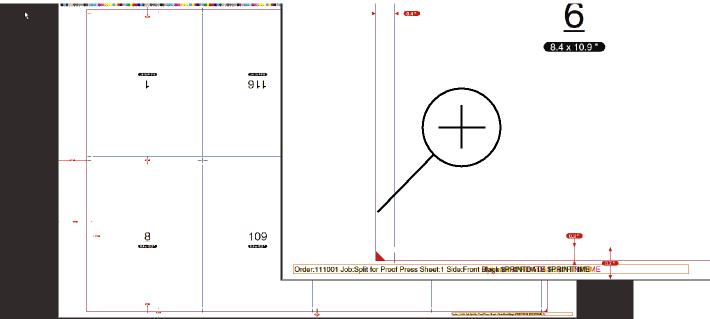Split for Proof in a nutshell
At A Glance
Split for Proof is an Agfa Apogee option that allows you to create a finished folded imposed proof. This proof can be a rendered PDF or a rendered file. This file or PDF can be sent to a laser printer with duplexing capabilities or digital press, for example, an HP Indigo or Xerox iGen.
Applies To:
:Apogee Manage, :Apogee Integrate
How It Works
:Apogee takes the imposition that is assigned to the job and divides it in either 1-up or a 2-up press sheets. All imposition parameters such as offsets, clip boxes, shingling, rotations, marks, etc. that are applied in the main imposition flow are automatically kept in the Split for Proof.
The 1-up version is identical to a page proof flow except with Split for Proof all parameters from the main imposition flow are kept.
The 2-up version is a printer-spread which is identical to a 2-up Saddle Stitched imposition flow but you have much more advantages. The parameters from your main imposition flow are kept, you dont have to create an imposition template for each page size, and the Binding Style from your main imposition flow is kept as well. In this way you can proof exactly the same result as your job after finishing.
In this example we created a job that consists of a total of 116 pages including a 4 page cover. We are planning to print this job on a 40 press using 39.375 x 25.5 paper. The total amount of press sheets is eight (front and back).

We will utilize Split for Proof to create our imposed and folded proof. Split for Proof is implemented in your workflow plan. In this example we are creating a PDF that we can print to a laser printer with duplexing capabilities or digital printer, for example a HP Indigo or Xerox iGen. The screenshot below shows the Split for Proof option.

With the release of :Apogee 7 we introduced folding sheets and the ability to combine multiple folding sheets on a press sheet. :Apogee will render each Split for Proof fold sheet and release them once a grouping is complete so that a PDF or file can be created.

Once the PDFs or files are printed, you fold and staple them together, then cut them to the final trim size. This could be automated if you use a Digital Press with folding and staple capabilities.
There are two options:
Option 1 is to use the Raster Preview option. This is a soft proof created in :Apogee that allows you check the relationship between the layout and the press sheet (see screenshot below).

The second option is to create a PDF mock-up from the :Apogee Imposition software and print it out on a laser printer. This mock up has all the measurements listed on the layout. This is a good tool to use if needed.

Why Is This Important?
The Split for Proof option eliminates the need for large double sided proofing devices and/or the need for operators to glue the front and back sheets together, cut them in printer spreads, fold then staple them together. As a company you will save time and money using the Split for Proof option.


 RSS
RSS
